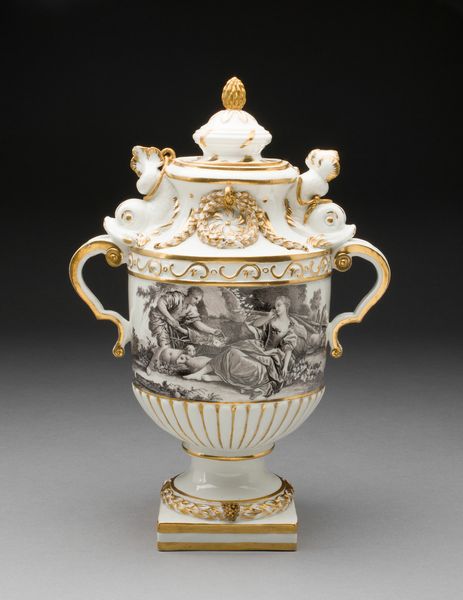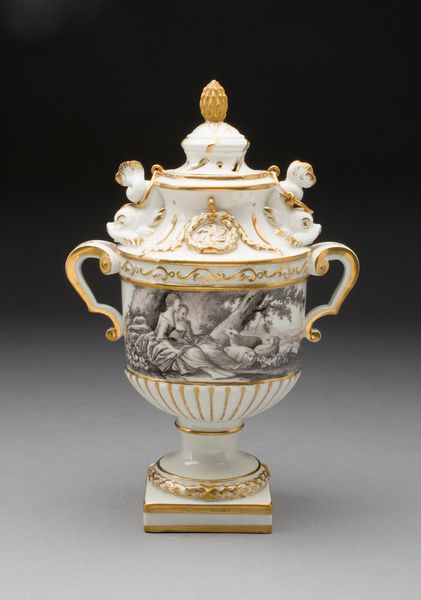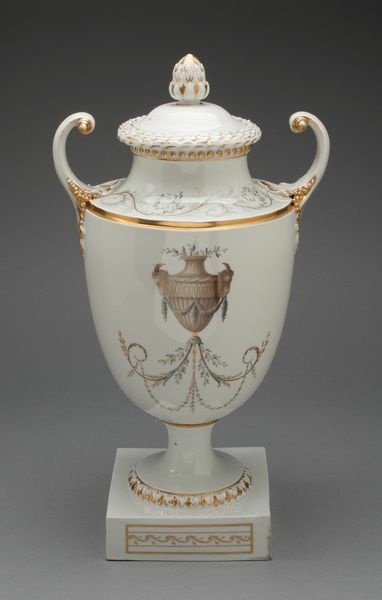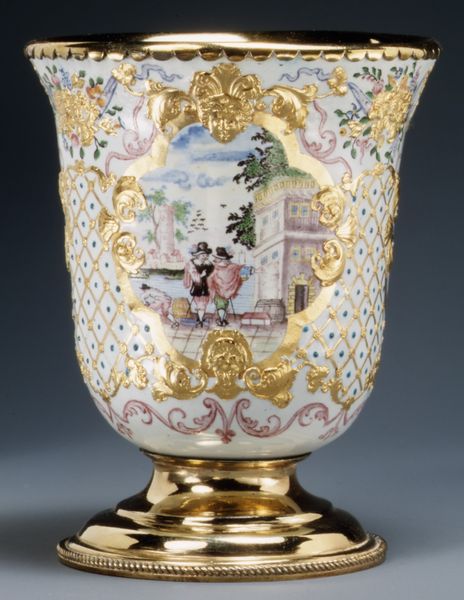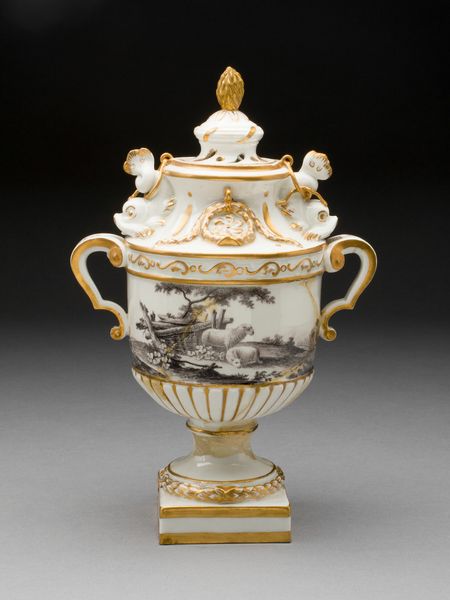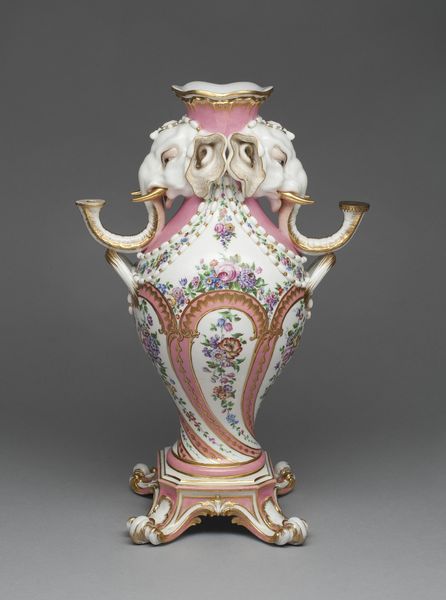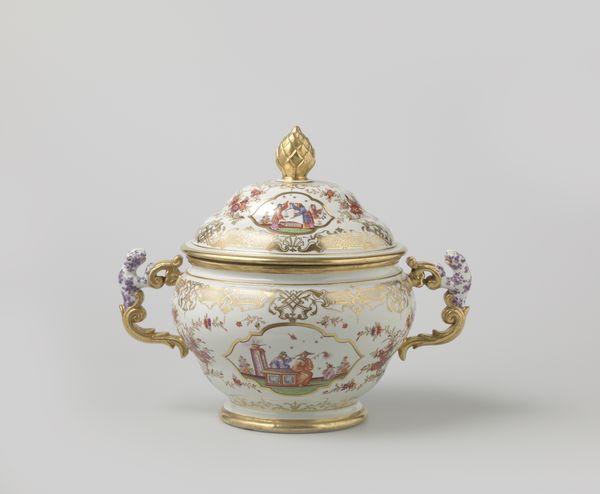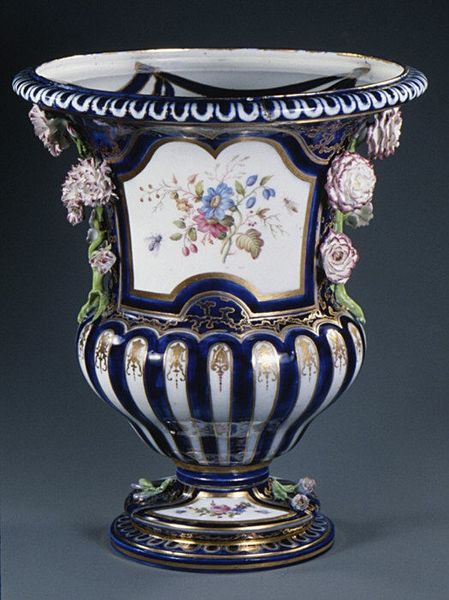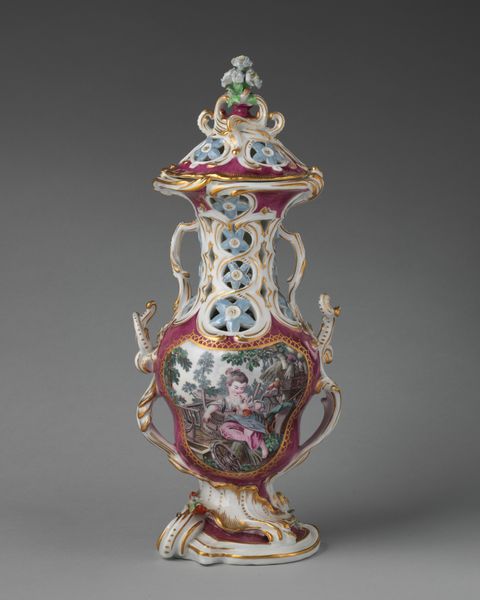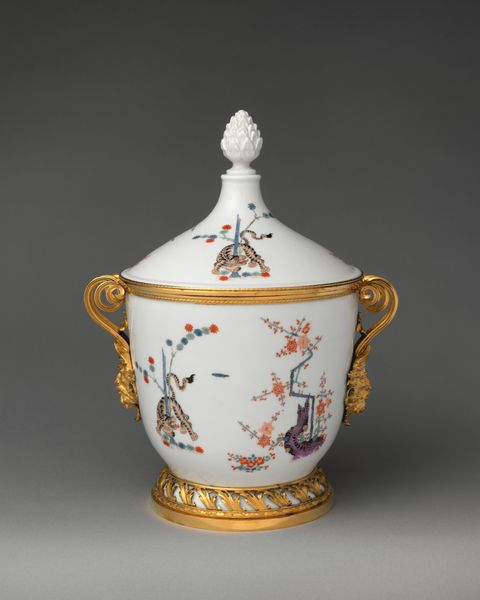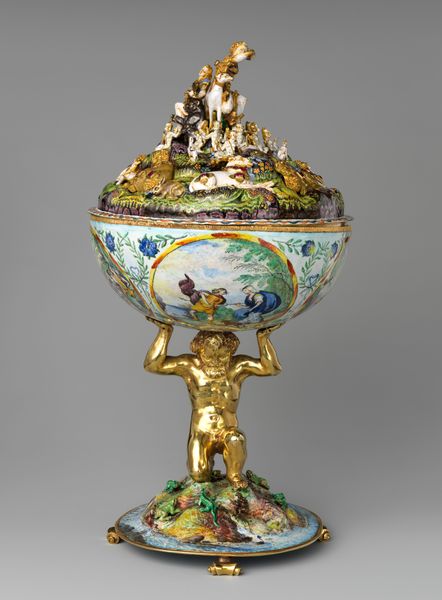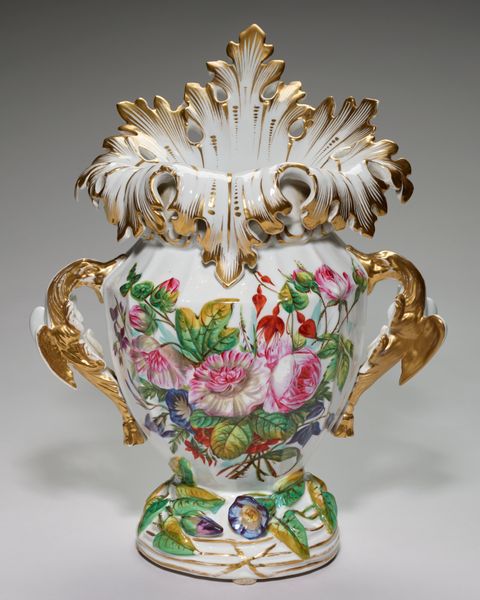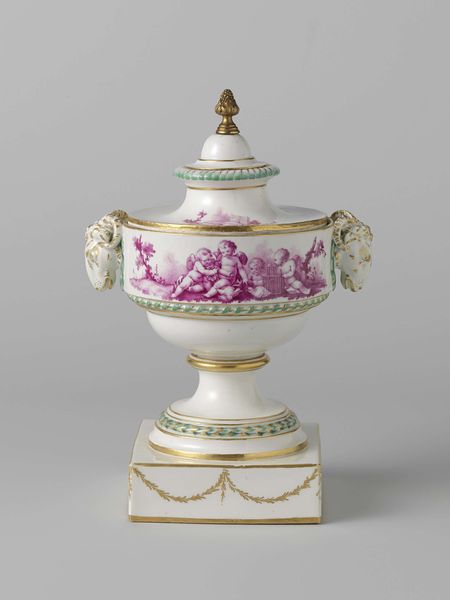
Vase with cover (vase parent) 1883 - 1885
0:00
0:00
Dimensions: Height (with cover): 14 in. (35.6 cm)
Copyright: Public Domain
Curator: This delicate porcelain sculpture, “Vase with cover (vase parent)” was crafted between 1883 and 1885 by Albert-Ernest Carrier-Belleuse, a French artist celebrated for his decorative arts. What are your initial impressions? Editor: It’s exquisitely pretty, a perfect example of Rococo revival! But my first thought is, how does an object like this fit into its historical context? This intense visual indulgence, those cherubs...was this meant to distract from social realities, or perhaps reinforce class distinctions? Curator: From a formal standpoint, notice the masterful balance of colour. The soft pastel blue against the bright white relief creates an airy, ethereal quality, perfectly fitting of the period. The textures too, from the smoothness of the porcelain to the detailed, almost lace-like relief work, create an interesting tension. Editor: Agreed. Yet the choice of these classical motifs – the cameos, the putti, even the stylized Greek key pattern—these evoke a very specific set of cultural values. These objects frequently appeared within very gendered spaces. So I'm curious to consider how women, in particular, were implicated in their display and interpretation. Curator: Indeed, Carrier-Belleuse, having spent time as the director of art at the Minton factory in England, knew precisely how to translate the artistic vocabularies of elite society through porcelain. Editor: And I find it’s crucial to consider these artworks as both products and producers of that elite culture. They aren't just pretty things, they're loaded signifiers of power, wealth, and aesthetic ideology. Where did an artist like Carrier-Belleuse situate himself amidst social transformations brought about by the French Revolution? Curator: Perhaps what interests me most is the remarkable craftsmanship. Carrier-Belleuse used porcelain to mimic marble, creating a fascinating play of appearances, challenging our perceptions of value. Editor: The skill is undeniable! But it’s also a reflection of the hierarchies that valorize some forms of labour while invisibilizing others. Who were the artisans who actually formed and fired this piece? We’ll never know their names. Curator: I leave appreciating how Carrier-Belleuse so carefully constructs each aspect of this ornate form, its curves, colors, and embellishments coalescing into this beautiful and rather delightful piece. Editor: And for me, pondering the silent stories held within the object allows us to interrogate a loaded chapter of cultural history—linking decorative aesthetics with power structures.
Comments
No comments
Be the first to comment and join the conversation on the ultimate creative platform.
